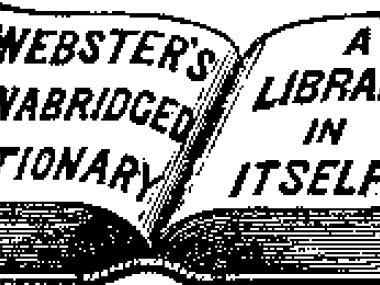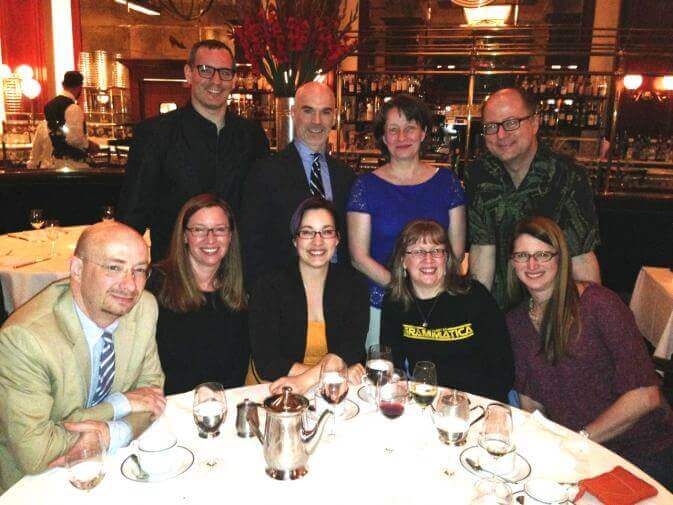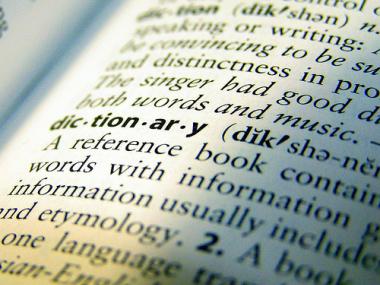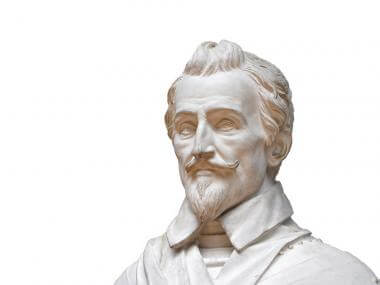Merriam-Webster’s Peter Sokolowski Explains How Dictionary Definitions Change Over Time
In the 1950s, Merriam-Webster editor Peter Gove changed the rules for writing dictionary definitions, and Peter Sokolowski shares interesting and funny stories about what happened next.
Peter Sokolowski (second from the left, back row) with other language lovers at an ACES conference dinner.
[Listen to the interview using the audio player in the upper right sidebar of this page. The interview segment begins at the 4:08 mark.]
Peter Sokolowski is an editor-at-large at Merriam-Webster, where he has written definitions for the French-English Translation Dictionary, the 11th edition of the Collegiate Dictionary, and the Advanced Learner’s Dictionary. He also records pronunciations for the digital edition of the dictionary.
He says that when writing a definition, you pray for a good adjective, but that writing a definition can take anywhere from half an hour to half a month. For example, a complicated word such as disposition can take a long time but a straightforward word such as arctic can go quickly.
In this interview, he retells a story about how definitions change over time that he shared with me at a dinner during the American Copy Editors Society in Las Vegas in March of 2014.
Why Dictionary Definitions Change Over Time
There are rules to write definitions, and Merriam-Webster revised its rules in the 1950s as the editors were working on Webster’s Third because they needed to make the dictionary smaller.
- No proper nouns. The new edition removed names such as George Washington and the Eiffel Tower. It was an admission that a dictionary didn’t need encyclopedic entries.
- The single-statement rule. New definitions were done in a replaceable single statement instead of a whole paragraph. The editor, Philip Gove, thought that the dictionary could be more precise by giving single-statement definitions. Every definition for an adjective would be a single adjectival phrase, and every definition for a noun would be a single noun phrase, and so on. If you were to remove the definition from the dictionary and insert it into a sentence, it would be substitutable, and grammatically, it would scan. It may not be elegant, but it would make sense.
- Evidence had to exist for all senses. We had to find citations from a book, magazine, or newspaper with the author’s name and date so we have a full bibliography of every example sentence we use in the dictionary and those can be used by the definers to figure out what words mean and how those meanings change over time.
He gave examples of the old and new definitions of arctic and spaniel (spaniel: old and new) to show how the newer definitions are more precise.
Listen to the audio starting at 4:08 (audio link) to hear our conversation and many more interesting examples. For example, if it doesn’t have an easy chair in the lobby, it may not be a hotel; and Noah Webster originally defined both dog and cat as simply “a domestic animal.”
Also, see Peter’s blog post at Merriam-Webster about how dictionary definitions change over time.
Photo Credit: Mark Allen
You May Also Like…







